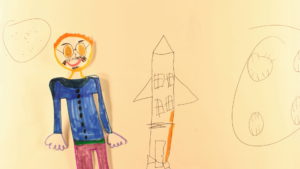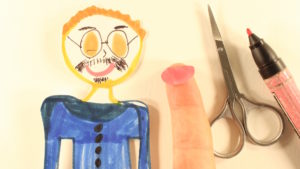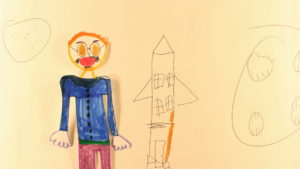In the workshops I teach to elementary-age animators, we work exclusively on paper, without student workstations. We emphasize self expression and immediacy over skill, and there really isn’t time to teach 9-mouth-shape lip sync of the classical Disney variety. Instead, we use a haphazard, 2-shape method I like to call “mouth flapping”.
The closed-mouth/resting position [L] is drawn onto the character itself. The open-mouth position [R] is achieved by cutting an oval out of a separate piece of paper that is the same color as the closed mouth, and at least as wide (if not slightly wider), then placing the replacement mouth on top of the drawing of the closed mouth temporarily.

If you have Dragonframe, you can import your dialogue and add the open-mouth overlay for frames corresponding to the peaks of your waveform, and that’s really all there is to it. If you don’t have Dragonframe, you can switch between the two mouth shapes haphazardly — say every 4 or 6 frames if working at 12fps — and honestly most people (probably any non-animator) won’t even notice that it’s not quite in sync.
DIY Animation Club co-founder Dave Merson Hess taught and developed animation curriculum for Aurora Picture Show’s youth workshops, 2014-2018. He also started Rush Process, a Gulf Coast-based festival celebrating animators who work with physical media, which ran from 2015 to 2018. Dave is currently an MFA candidate in Experimental Animation at Calarts.



Leave a Reply
You must be logged in to post a comment.